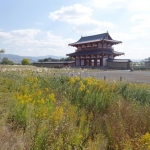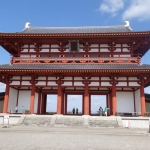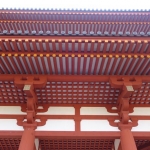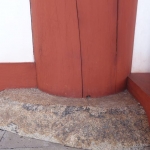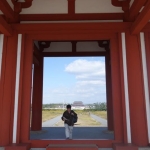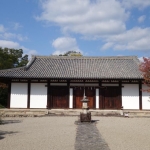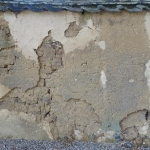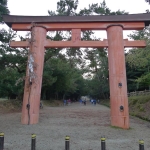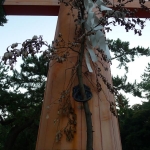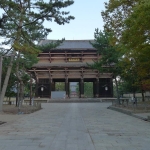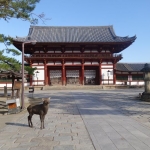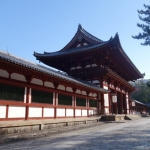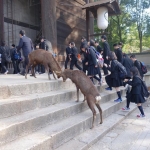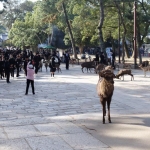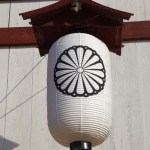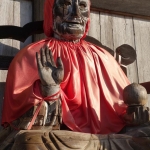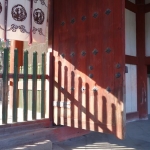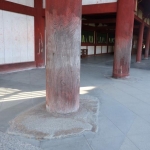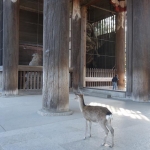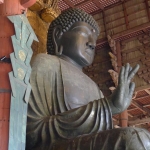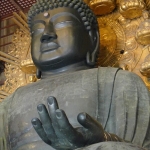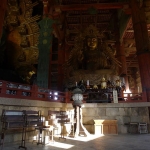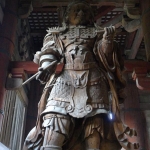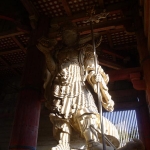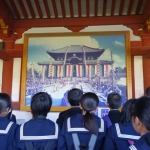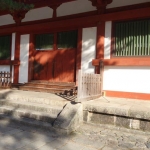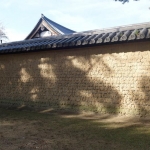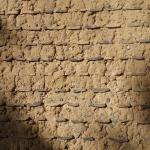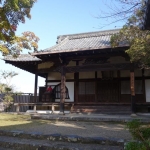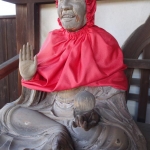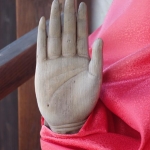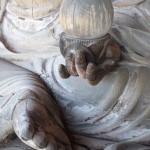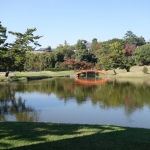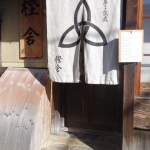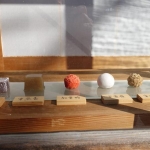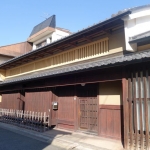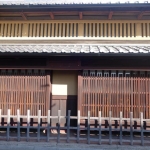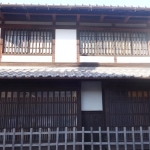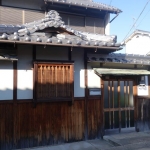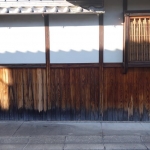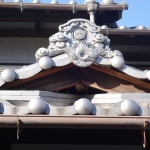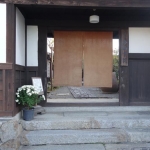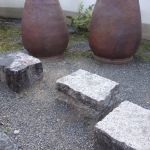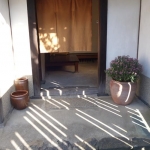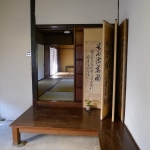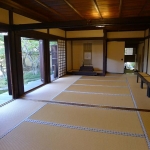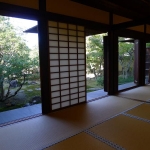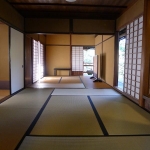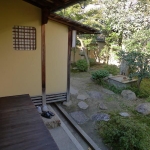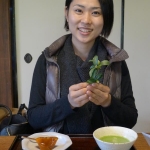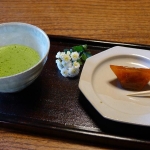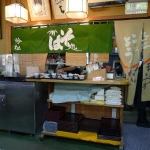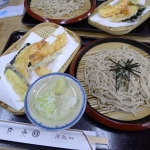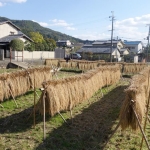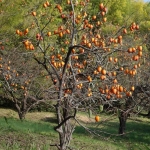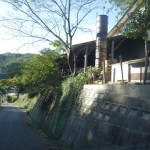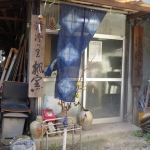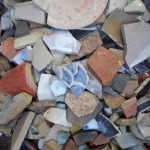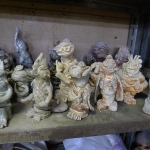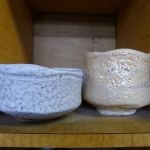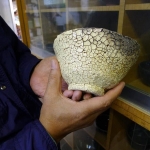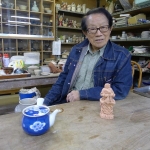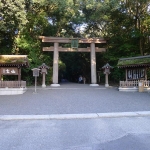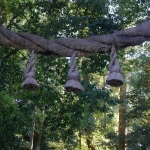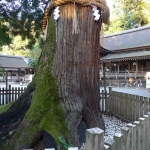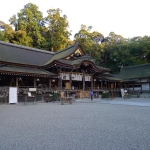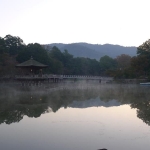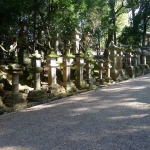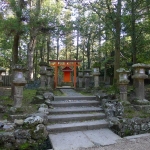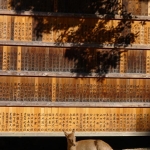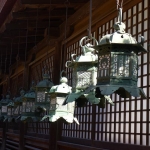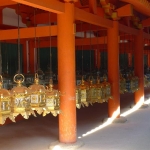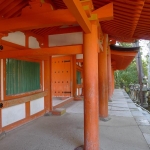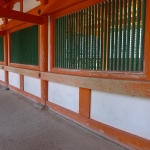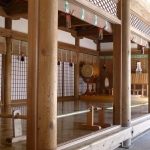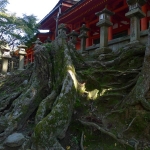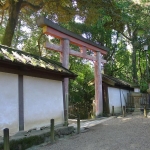Nara
At Nara
the fragrance of chrysanthemums
ancient Buddhas
–Bashō
Red: Places of Interest Blue: Eat Green: Sleep

Legend says that the deity Takemikazuchi-no-mikoto arrived in Nara riding on a white deer over 1300 years ago. Deer are considered messengers of the gods, and the people have always protected them. That is why there are so many deer in the area.
Most classical Japanese poetry identifies the cry of the deer with Autumn, such as this poem by Saigyo. We know it is autumn because the moon is the symbol of autumn in classical Japanese poetry:
As the moon
shines beautifully
rising over Mount Mikasa,
deer begin to cry
over the plain of Kasuga.
Modern poems do not follow the conventions of classical poetry, such as this one by Byakuren:
In the shadow
of the old lantern,
with kind eyes
the Nara deer
watch over me.
Nara is very important to visit. Japan’s first permanent capital was established in the year 710 at Heijo, the city now known as Nara. As the influence and political ambitions of the city’s powerful Buddhist monasteries grew to become a serious threat to the government, the capital was moved to Nagaoka in 784.
Nara is located less than one hour from Kyoto and Osaka. Due to its past as the first permanent capital, it remains full of historic treasures, including some of Japan’s oldest and largest temples.
Some people now choose to stay in Nara and commute by train to Kyoto, preferring the slower pace of this town. To be able to enjoy your visit to these sites, get up early before the crowds and stay over.
I thoroughly enjoyed my most recent visit and highly recommend staying here for a couple days or more to spend time at these important historical sites, both during the day and especially at night.
Helpful Guides:
Nara Can Be Divided into Roughly Four Areas.
The first area is Central Nara, home to Todai-ji Temple, which contains the largest statue of Buddha in Japan. Appropriately, the Daibutsu-den, which houses the Buddha, is said to be the largest wooden structure in the world and is listed as a UNESCO World Heritage Site.
The second area, Ikaruga, is home to Horyu-ji Temple, a World Heritage Site built in early 7th century by Prince Shotoku (574-622). This ancient temple complex contains some of the oldest existing wooden buildings in the world and many Important Cultural Properties designated by the Ministry of Education, Culture, Sports, Science and Technology.
The third area, Asuka, is the site where Japan’s earliest historical capital city remains. A number of famous stone statues and fresco burial mounds can be found here. The final area, Yoshino, is a mountainous region that contains several UNESCO World Heritage Sites, and is possibly Japan’s most famous cherry blossom viewing region.
Nara is popularly known for the many deer roaming freely in its central area and the beauty of the Chinese tallow (sapium sebiferum) trees in autumn. The deer are a symbol of a god deified at the nearby Kasuga-Taisha Shrine.
On the west side of Nara City are the remains of Heijo-kyo (formerly the emperors’ palace) and still further to the south are Yakushi-ji and Toshodai-ji Temples, both famous for their architecture and Buddhist statues sculpted in the 8th century.
You can travel from Nara City to both Horyu-ji Temple and the Asuka area by train in 30 minutes while Yoshino is another 30 minutes from Asuka.
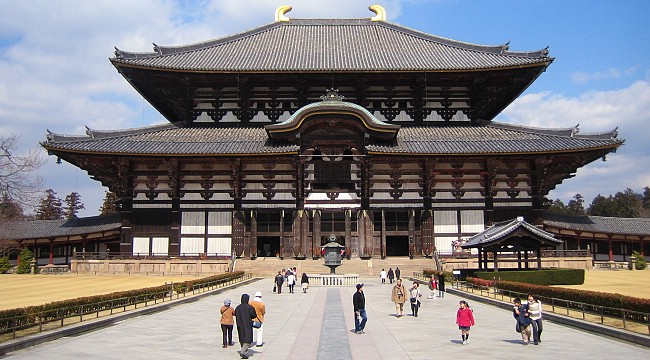
Most people come to see Todai-ji (“Great Eastern Temple”) which is one of Japan’s most famous and historically significant temples and a landmark of Nara. The temple was constructed in 752 as the head temple of all provincial Buddhist temples of Japan and grew so powerful that the capital was moved from Nara to Nagaoka in 784 in order to lower the temple’s influence on government affairs.
Todaiji’s main hall, the Daibutsuden (Big Buddha Hall) is the world’s largest wooden building, despite the fact that the present reconstruction of 1692 is only two thirds of the original temple hall’s size. The massive building houses one of Japan’s largest bronze statues of Buddha (Daibutsu). The 15 meters tall, seated Buddha represents Vairocana and is flanked by two Bodhisattvas.
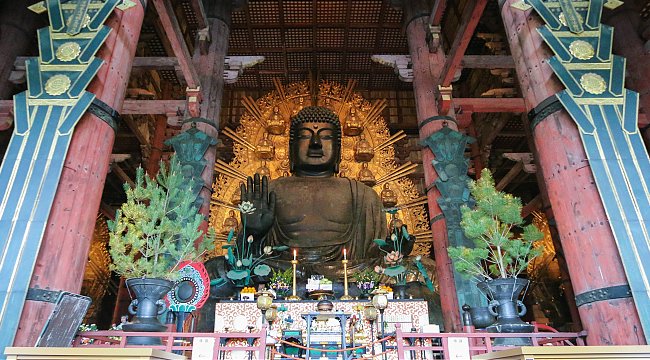
Several smaller Buddhist statues and models of the former and current buildings are also on display in the Daibutsuden Hall. Another popular attraction is a pillar with a hole in its base that is the same size as the Daibutsu’s nostril. It is said that those who can squeeze through this opening will be granted enlightenment in their next life.
Along the approach to Todai-ji stands the Nandaimon Gate, a large wooden gate watched over by two fierce looking statues. Do not miss the Kongo Rikishi, the Nio Guardian Kings, which are designated National Treasures together with the gate itself. Temple visitors will also encounter some deer from the adjacent Nara Park, begging for shika senbei, special crackers for deer.
Todaiji’s grounds are spacious and cover most of northern Nara Park, including a number of smaller temple halls and sites of interest around the Daibutsuden Hall. Below are some of the other attractions that can be found in the Todaiji temple complex:
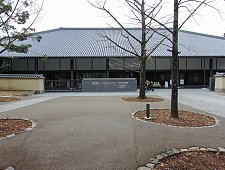 |
|
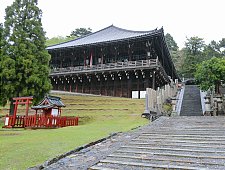 |
|
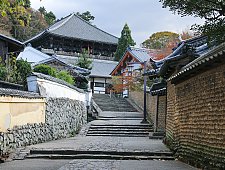 |
|
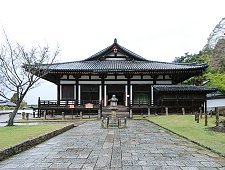 |
|
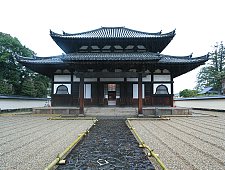 |
|
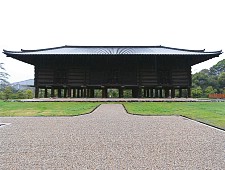 |
|


